So. You have a secret or not-so-secret wish to experience an African safari. But so far you haven’t convinced your parents to take you. Well, you’re in luck, because the safari has just come to you! We leave for the Serengeti National Park right now.
Upon arriving, you’re struck by the vastness of the Serengeti region — grasslands for as far as the eye can see, punctuated only by an occasional acacia tree. The Maasai people, who live on the Serengeti, gave the region its name. In their language, Serengeti means “endless plains.”
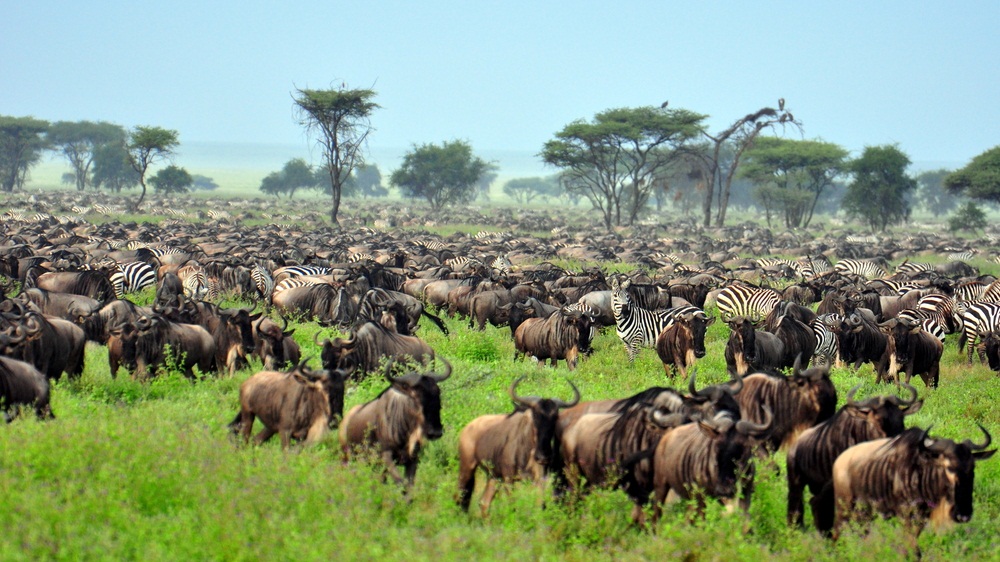
A spectacular view of animals roaming the Serengeti. (Oleg Znamenskiy/ Shutterstock)

The Serengeti National Park is a large national park located in Serengeti area, Tanzania. (map via Wikipedia)
Serengeti National Park is one of the world’s major wildlife reserves. Indeed, it is the natural habitat of animals that we, in the United States, see only at the zoo.
Let’s see what we’ll find today…
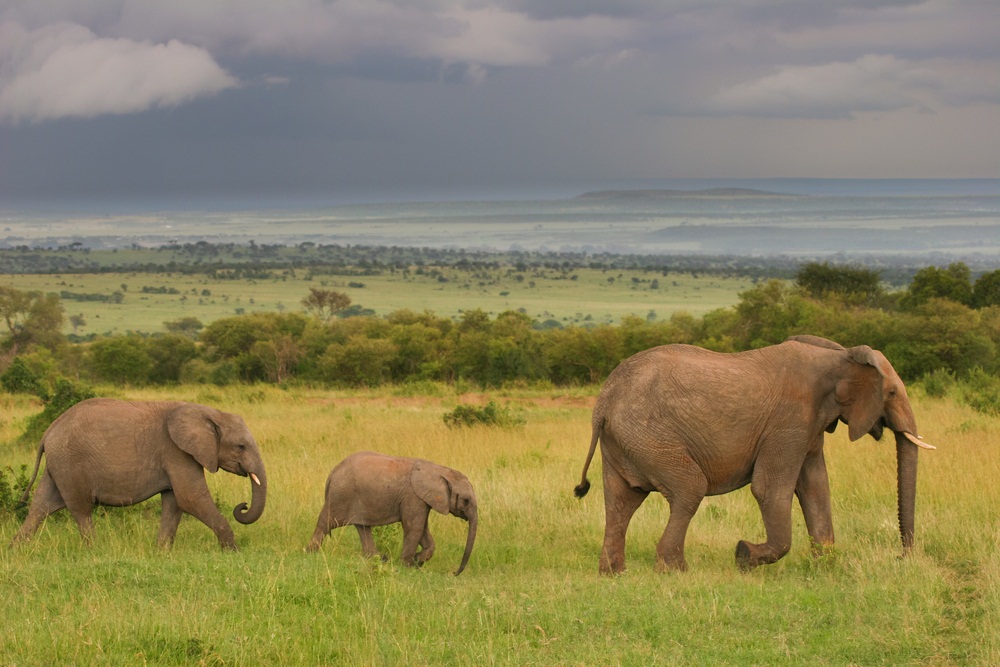
A family of elephants traversing the plains. (Piotr Gatlik/ Shutterstock)
Elephants, of course! The Serengeti is home to huge herds of elephants, the largest land mammals on Earth. They weigh between 2.5 and 7 tons — a big male weighs about the same as an average school bus. Elephants drink between 30 and 50 gallons of water a day, and they eat up to 300 pounds of vegetation. An elephant uses its trunk, a combination nose and upper lip, for smelling, grabbing, drinking, breathing, and trumpeting. Elephants use their tusks to strip the bark from trees and dig for water and food. Don’t be surprised if an elephant starts charging your vehicle with its ears spread in a demonstration of dominance. It’s probably just a display and not a real attack, but it’s not something you will easily forget. Here are some other elephant facts you won’t easily forget.

The Serengeti is home to huge herds of elephants, the largest land mammals on Earth. (Theodore Mattas/ Shutterstock)
* An elephant’s trunk has more than 40,000 muscles.
* On parts of its body, an elephant’s skin is an inch thick.
* To stay, cool elephants flap their ears.
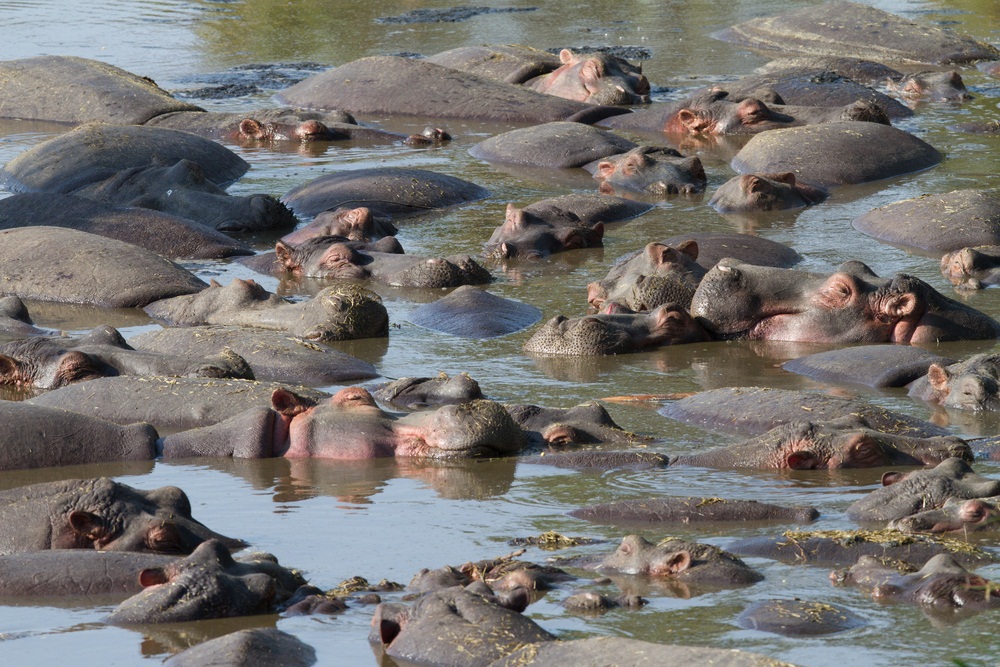
To keep cool, hippos may spend more than 15 hours a day in water. (Dr. Flash/ Shutterstock)
See those things in the water that look like bumps? They’re hippos. In almost every wetland and waterway,you’ll find at least one hippo. With a name derived from the Greek that means “river horse,” it should be no surprise. To keep cool, hippos may spend more than 15 hours a day in water. They can hold their breath under waterfor up to five minutes. As the sun sets, they emerge from their cool refuge to graze on grass. Unfortunately, we don’t have time to wait for that, but we do have time for a few fast facts.
* Hippos are born underwater.
* By itself, the hide of a hippo may weigh half a ton.
* While on land, hippos secrete a red substance, giving rise to the myth that hippos sweat blood. The substance actually functions as a moisturizer and sun block.
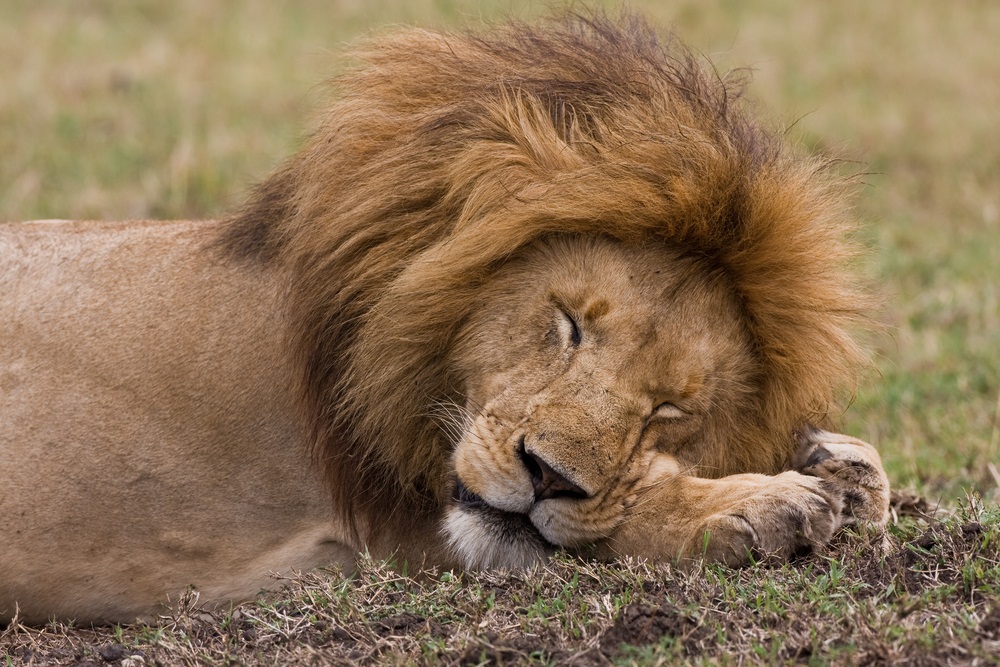
Shhh! Lions can sleep and rest about 20 hours per day. (P. Schwarz/ Shutterstock)
Shhhh. The lion is resting. Lions are the only big cats to live in groups. A group, or pride, of lions often contains several adult females, their young, and a few males. Other than human beings, lions have few natural enemies. While they’ll eat rodents, reptiles, and insects, they hunt larger animals like wildebeest, buffalos, zebras, and giraffes. The females do most of the hunting. Often one female in a pride chases prey toward another female lying in wait for an ambush
* Lions sleep and rest about 20 hours a day.
* Lions can go over five days without water.
* Males with darker, longer manes are stronger and healthier than those with lighter, shorter manes.
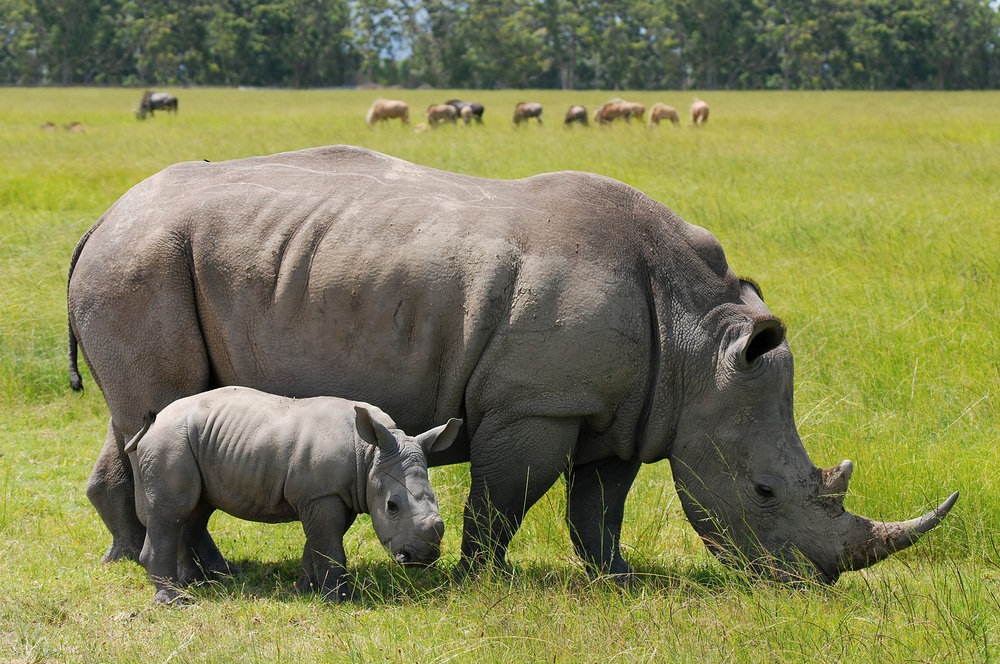
Though they appear bulky and awkward, rhinos can reach speeds of 5 miles per hour if needed. (Karel Gallas/ Shutterstock)
We’re in luck! You don’t often see rhinos because they are critically endangered. These unwieldy vegetarians are known for their poor eyesight, which at times leads them to charge at tree trunks and other objects. Though they appear bulky and awkward, rhinos can reach speeds of 35 miles per hour if needed. During a fight, the rhino’s horn may break off, but it does grow back again. Female rhinos use their horns to protect their young from crocodiles, lions, and other predators. But humans are the rhino’s primary threat. Even though they are a protected species, many people are willing to break the law in hopes of selling their horns for a high price.
* The rhino’s horn is made of material similar to human fingernails.
* A group of rhinos is called a crash.
* Rhinos roll in the mud, which protects their skin from sunburn and pesky bugs.

Zebras are migrating animals, always looking for fresh grass and water. (Joel Shawn/ Shutterstock)
Zebras are migrating animals, always looking for fresh grass and water. At times, they may form herds of tens of thousands. Imagine an endless flow of black and white stripes. It creates an extremely confusing image, especially to a predator, such as a hungry leopard, cheetah, or lion. Scientists believe that the zebra’s stripes are a natural adaptation that helps it survive.
* A zebra’s teeth keep growing its entire life, but get worn down by constant grazing and chewing.
* No two sets of zebra stripes are exactly alike, much like human fingerprints.
* A zebra’s night vision is as good as an owl’s.

The Serengeti is home to about 2 million wildebeests, more than any other single mammal species in the region. (Gerrit de Vries/ Shutterstock)
The Serengeti is home to about 2 million wildebeests, more than any other single mammal species in the region. (That’s greater than the population of Philadelphia!) Each summer these bearded antelopes form a single herd and migrate north in search of fresh grasses. They return in the fall to complete a trek that covers about 1,800 miles — one of the most impressive natural events on the planet.
* Zebras and wildebeests graze together without conflict because they each like a different part of the grass.
* Wildebeests are also known as gnu (pronounced “new”) because the word resembles the sound they make.
* Wildebeests are herding animals that sleep in rows on the ground.

At 16 feet or more , giraffes are the tallest of all land animals. (Four Oaks/ Shutterstock)
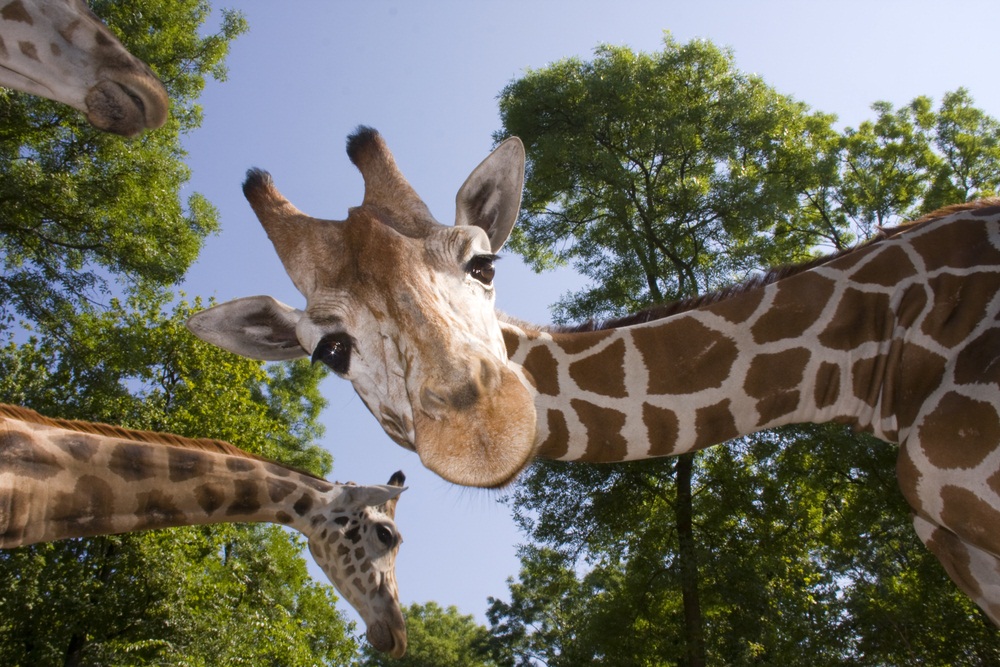
A giraffe’s perspective must be an interesting one. (Belizar/ Shutterstock)
* A giraffe has the same seven vertebrae in its neck as most mammals do, no more. However, a giraffe’s vertebrae are much larger.
* Giraffes swing their long necks in combat with one another to establish dominance.
* A giraffe’s tongue may be up to 21 inches long.

A beautiful leopard lounges and surveys the scene. (Volodymyr Burdiak / Shutterstock)
Unfortunately, we didn’t see any leopards or cheetahs today. These big cats also call the Serengeti home, but they are less common than lions and harder to spot. Perhaps we’ll spot them on our next visit.
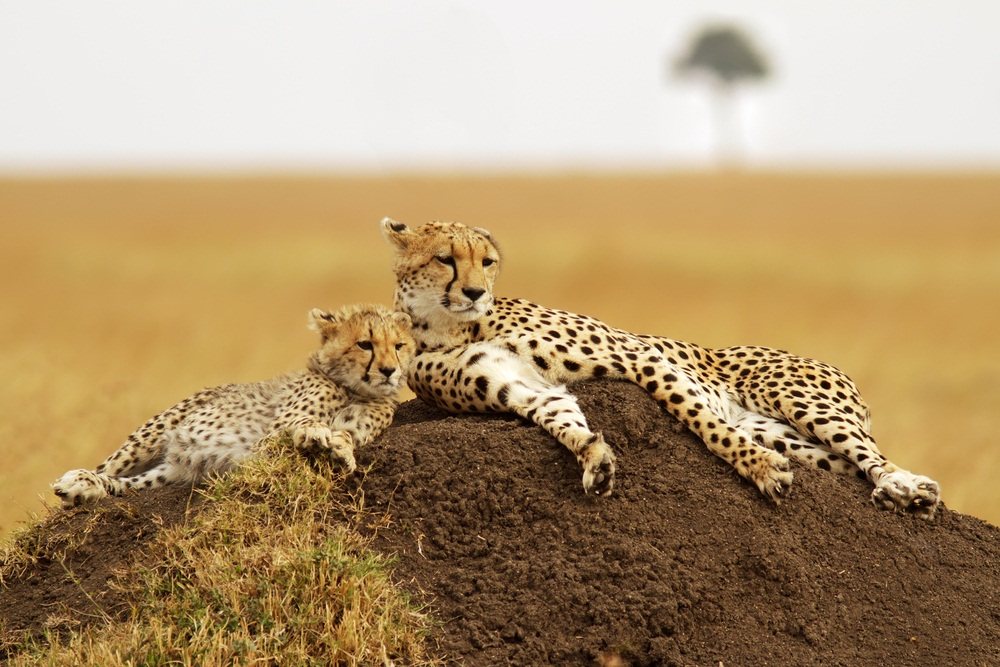
These adorable cheetah cubs will eventually reach the fastest speed of any land animal. (Bryan Busovicki/ Shutterstock)




